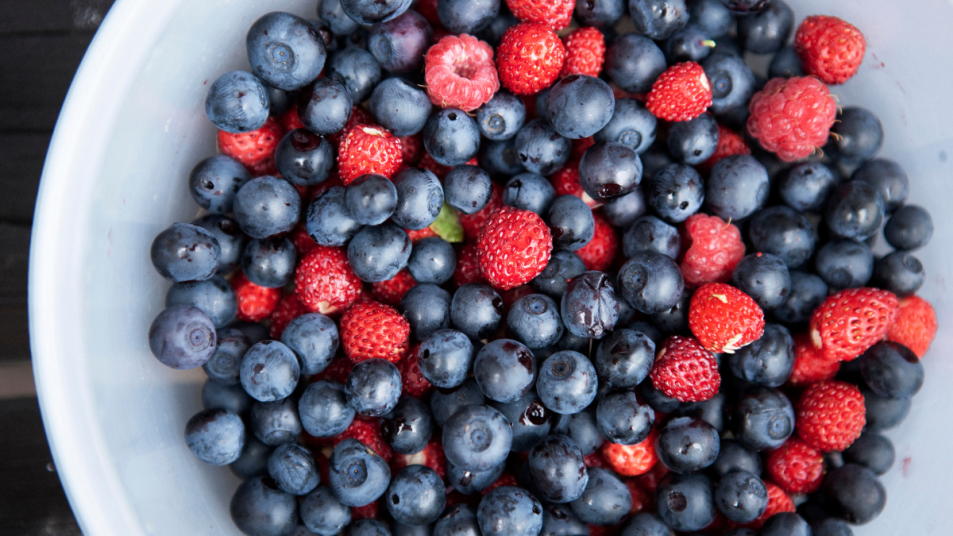These Popular Fruits Could Be the Secret to Curing Your Arthritis Pain

“Whoa!” Betsy Robinson lost her breath as she reached up to place a book on a shelf in her gift shop and fiery pain shot from her right hip down her leg. I can’t take this anymore, the Portland, Oregon, then-56-year-old thought wearily.
Two years earlier, after months of chronic hip and leg pain, a visit to her doctor had yielded a disheartening diagnosis: “You have early onset arthritis,” he’d said. At that time, he said ibuprofen was all she needed. But Betsy worried about the future. She knew arthritis is progressive. How much worse will it get?
As time went on, her pain did worsen, and the over-the-counter medication did little to relieve it. Climbing stairs and even walking became difficult. At night, her aching body kept her tossing and turning, leaving Betsy perpetually exhausted. She became even more unnerved when her arthritis spread to her hands, where painful nodules in her muscles made it sometimes impossible to grasp a coffee cup.
With simple, everyday tasks unbearable, the mother of three realized she needed something other than ibuprofen. But she didn’t want to take prescription medications for fear of side effects. Betsy had majored in health and fitness in college and had also studied and practiced holistic healing.
There has to be something natural I can try first, she hoped.
How can berries help arthritis?
Remembering from her studies that foods can have powerful healing properties, Betsy talked to a nutritionist friend who suggested making one simple addition to her diet: Berries.
Intrigued, Betsy consulted the Arthritis Foundation website and learned it was sound advice. Berries, in fact, are among some of the best fruits for arthritis because they are loaded with antioxidants, such as ascorbic acid (a form of vitamin C) and polyphenols, anthocyanins, and carotenoids, which give berries their deep color and also help rid the body of inflammation-causing “free radicals” and help prevent heart disease and certain cancers.
Intrigued, Betsy began tossing a cup of fresh or frozen berries into a smoothie each morning, rotating between raspberries, blueberries, or blackberries. She also enjoyed a bowl of berries with one of her meals each day. To her amazement, after just a couple of weeks, the pain in her joints began to lift. She also noticed she was able to sleep through the night.
Encouraged, she continued eating berries, and remarkably, within just three months, all of the pain in her joints was gone!
At her next checkup, Betsy’s doctor was thrilled with her progress. “Keep doing whatever you are doing,” he told her.
She did, and today, Betsy, now 58, remains pain-free, and the nodules on her hands are gone. Adding berries to her diet for her arthritis also inspired her to incorporate other healthy foods, and she’s now lost 50 pounds.
“My life has completely changed. I actually feel younger,” says Betsy. “Today, I am living the healthy, pain-free life that seemed impossible before!”
What are other natural strategies for stopping pain in its tracks?
Before you start looking into medication, these natural pain relievers may be able to help.
For sinus headaches: Peppermint oil soothes headaches as effectively as taking 1,000 milligrams of acetaminophen, report scientists in the journal Phytomedicine, who say its volatile compounds calm pain nerves, relax spasming muscles and stimulate blood flow to the scalp. And it’s easy to make your own diffuser: Boil one cup of water and pour into a bowl. Add six drops of peppermint oil, then inhale the steam with a towel over your head.
For belly bloat: Nibbling on one teaspoon of fennel seeds can end bloat-triggering indigestion in two minutes, thanks to the seeds’ rich stores of anethole, a compound that studies show breaks up gas bubbles and stimulates muscle contractions to speed digestion.
For joint pain: Massaging sore spots with half a teaspoon of comfrey cream reduces pain by 33 percent in the first hour—and by 95 percent after four days if you use it three times daily, say British researchers, who credit comfrey’s allantoin and rosmarinic acid for reducing swelling and encouraging tissue healing.
A version of this article originally appeared in our print magazine, Woman’s World.












